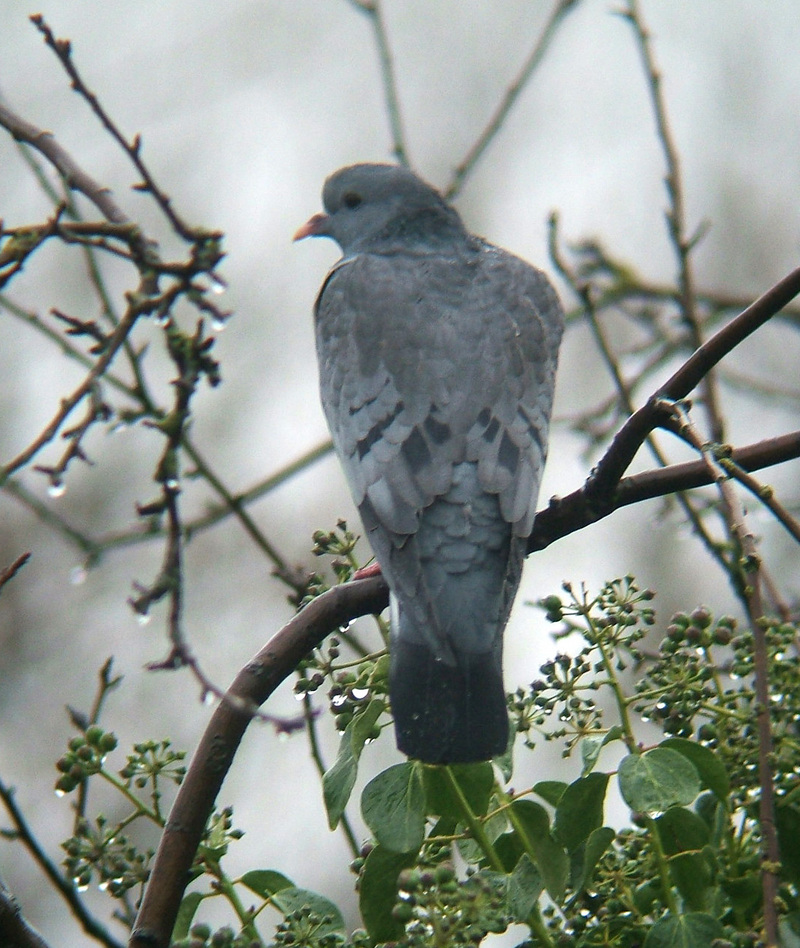|
| Query: Wild pigeon | Result: 4th of 40 | |
Stock Pigeon (Columba oenas) - Wiki
| Subject: | Stock Pigeon (Columba oenas) - Wiki
| |

| Resolution: 1077x1276
File Size: 487994 Bytes
Upload Date: 2007:10:29 17:41:43
|
Stock Pigeon
From Wikipedia, the free encyclopedia
[Photo] Stock Pigeon (Columba oenas). Newcastle, Northumberland, UK; 26 November 2005. Photo by MPF. | Permission is granted to copy, distribute and/or modify this document under the terms of the GNU Free Documentation License, Version 1.2 or any later version published by the Free Software Foundation; with no Invariant Sections, no Front-Cover Texts, and no Back-Cover Texts. A copy of the license is included in the section entitled "GNU Free Documentation License". |
The Stock Pigeon (Columba oenas) (formerly Stock Dove) is a member of the family Columbidae, doves and pigeons.
In the northern part of its European and western Asiatic range the Stock Pigeon is a migrant, elsewhere it is a well distributed and often plentiful resident.
The three western European Columba pigeons, though superficially alike, have very distinctive characters. The Wood Pigeon may at once be told by the white on its neck (in adults) and wings. The Rock Pigeon and Stock Pigeon are more alike in size and plumage, but wild specimens of the former have a white rump and two well-marked dark bars on the wing, while the rump of the Stock Pigeon is grey and its wing bars incomplete. Feral pigeon (the same species as Rock Pigeon) is highly variable, and indistinctly marked grey specimens with the white rump missing can sometimes resemble the Stock Pigeon quite closely.
The haunts of the Stock Pigeon are in more or less open country, for though it often nests in trees it prefers parklands to thick woods. It is also common on coasts where the cliffs provide holes. Its flight is quick, performed by regular beats, with an occasional sharp flick of the wings, characteristic of pigeons in general.
It perches well, and in nuptial display walks along a horizontal branch with swelled neck, lowered wings, and fanned tail. During the circling spring flight the wings are smartly cracked like a whip.
The Stock Pigeon is sociable as well as gregarious, often consorting with Wood Pigeons, though doubtless it is the presence of food which brings them together.
Most of its food is vegetable; young shoots and seedlings are favoured, and it will take grain.
The short, deep, "grunting" Ooo-uu-ooh call is quite distinct from the modulated cooing notes of the Wood Pigeon; it is loud enough to be described, somewhat fancifully, as "roaring".
The nest (though nesting material is seldom used) is usually in a hole in a tree, a crack in a rock face, or in a rabbit burrow, but the bird also nests in ivy, or in the thick growth round the boles of common lime (linden) trees. It will also use nest boxes.
http://en.wikipedia.org/wiki/Stock_Pigeon
| The text in this page is based on the copyrighted Wikipedia article shown in above URL. It is used under the GNU Free Documentation License. You may redistribute it, verbatim or modified, providing that you comply with the terms of the GFDL. |
|
Comments |
|---|
| | Guest |
|
Scientific Name: Columba oenas Linnaeus, 1758
Common Names: Stock Dove, Stock Pigeon
French: Pigeon colombin German: Hohltaube Spanish: Paloma zurita
Taxonomy: Columba Oenas Linnaeus, 1758, Sweden. |
^o^
Animal Pictures Archive for smart phones
^o^
|
|
|